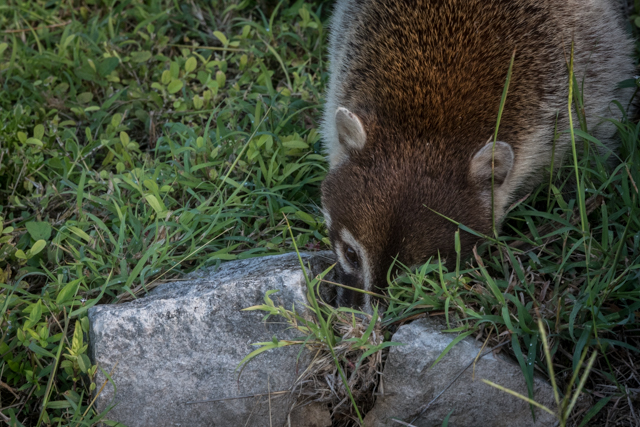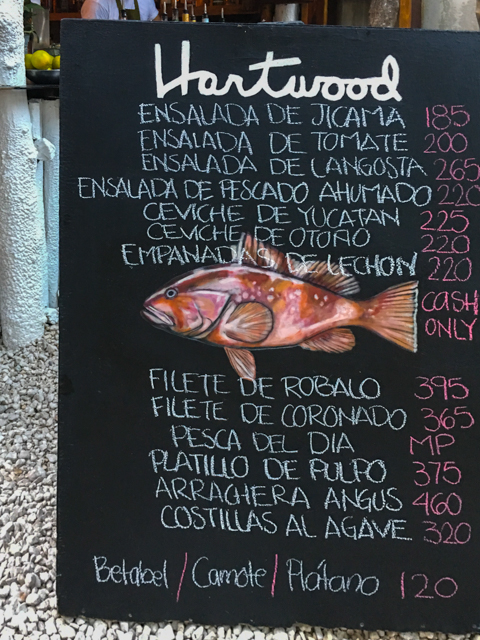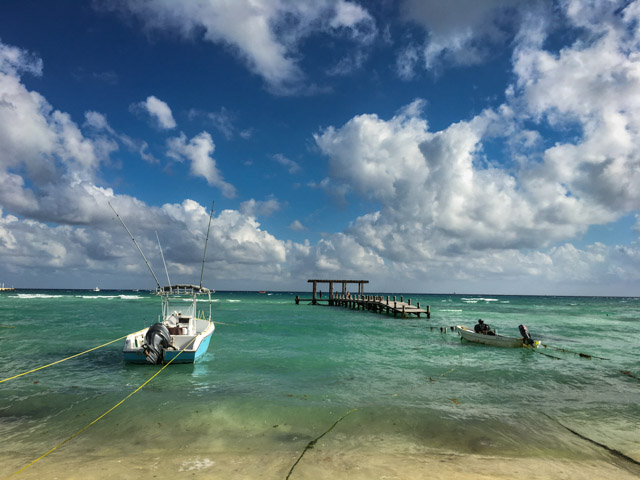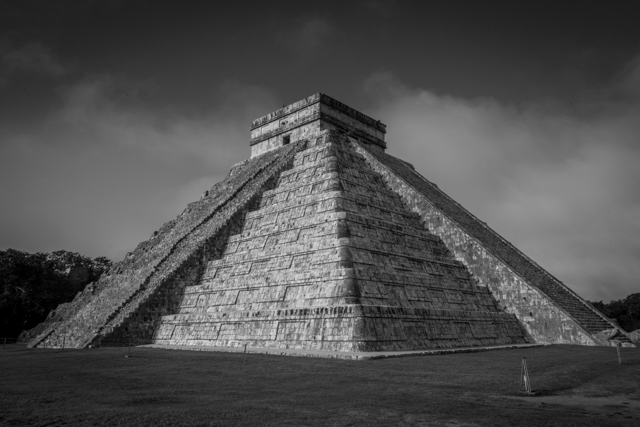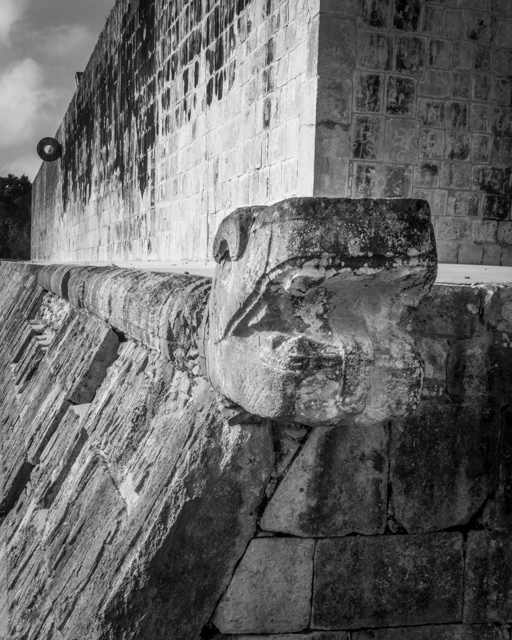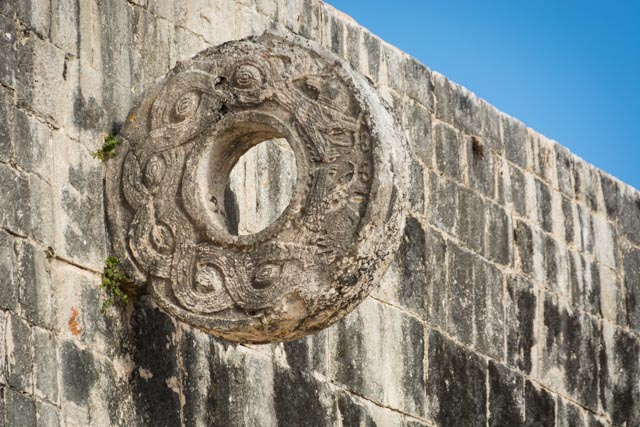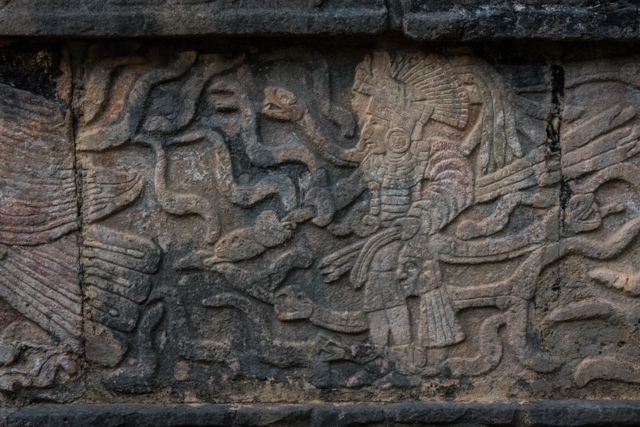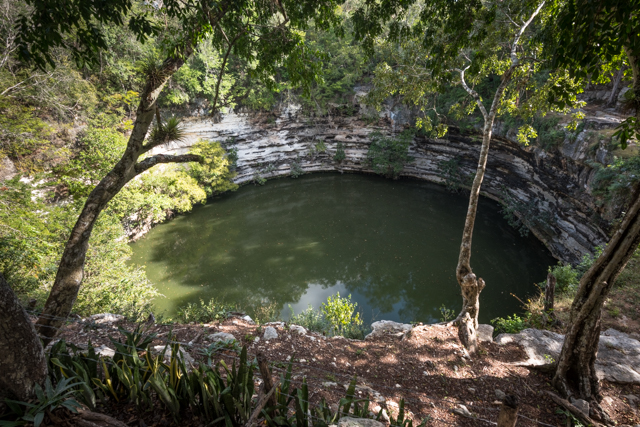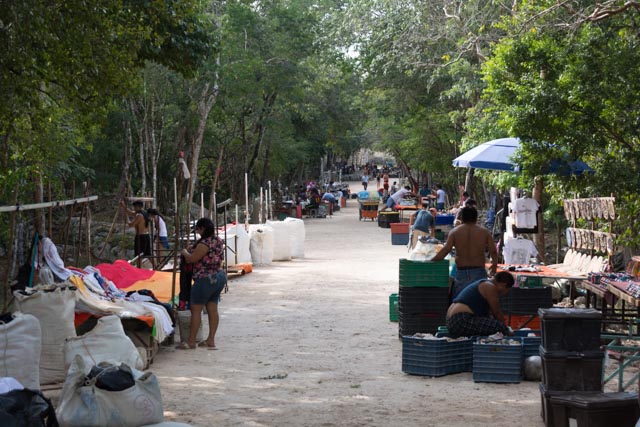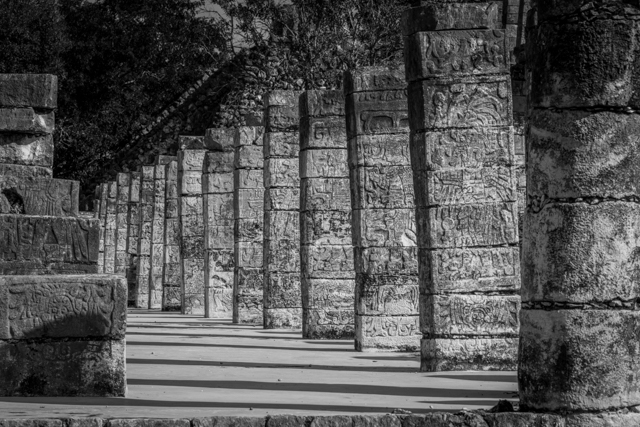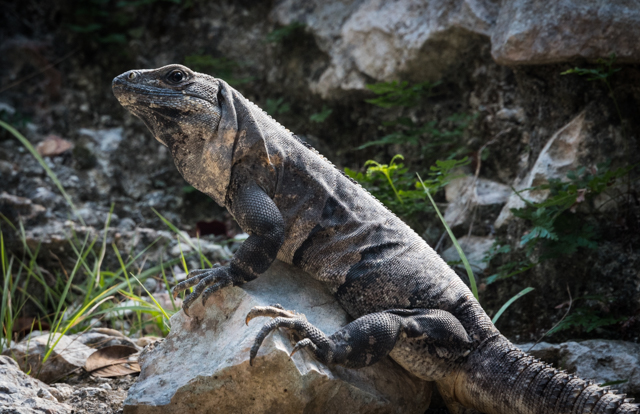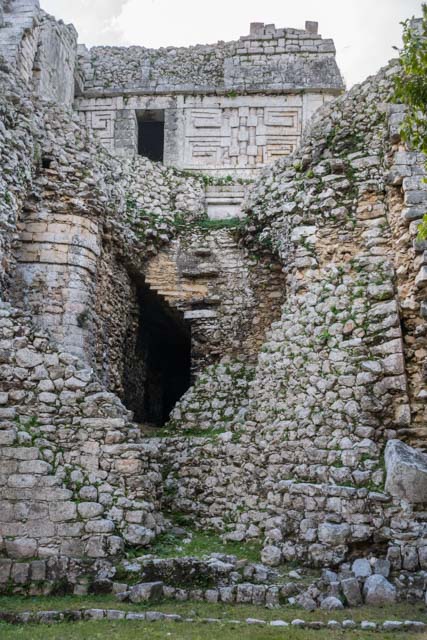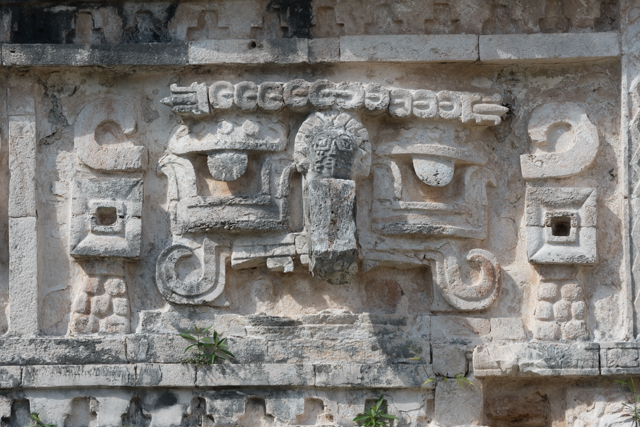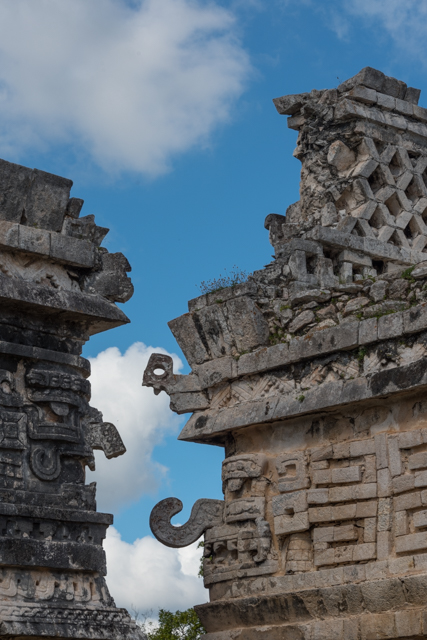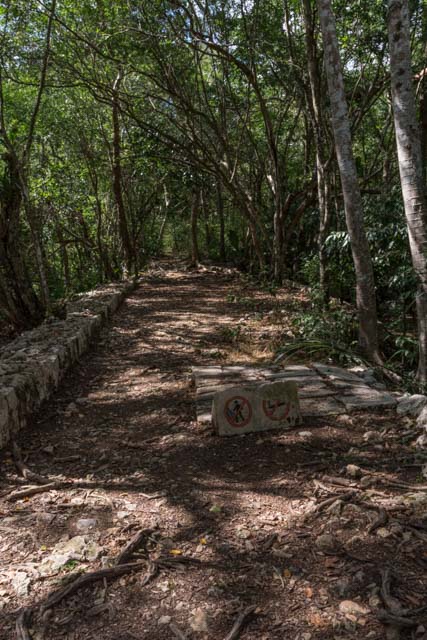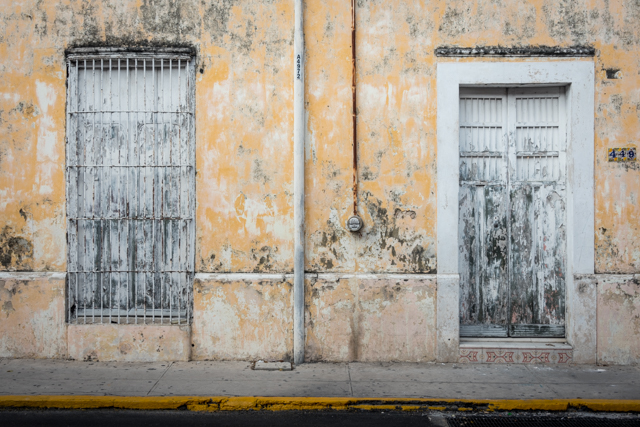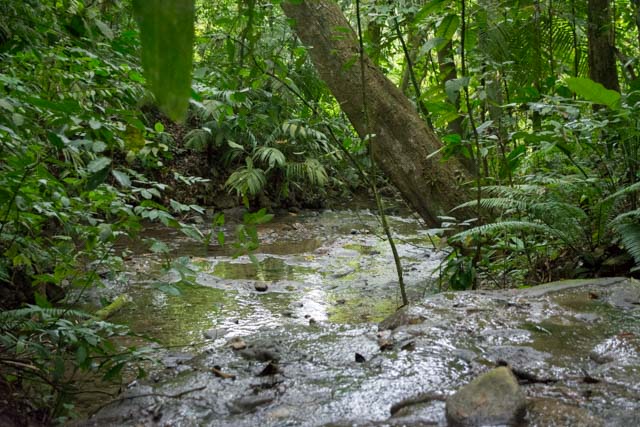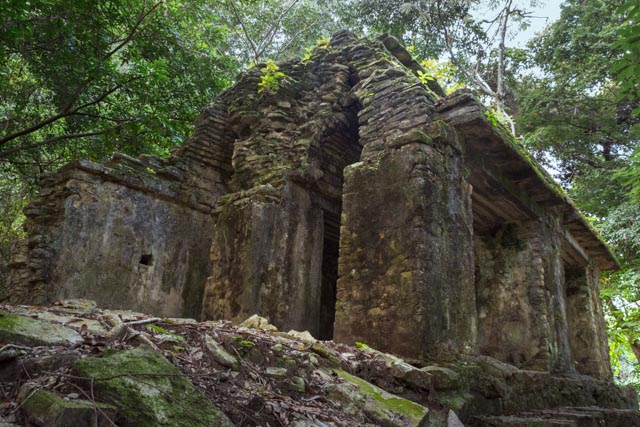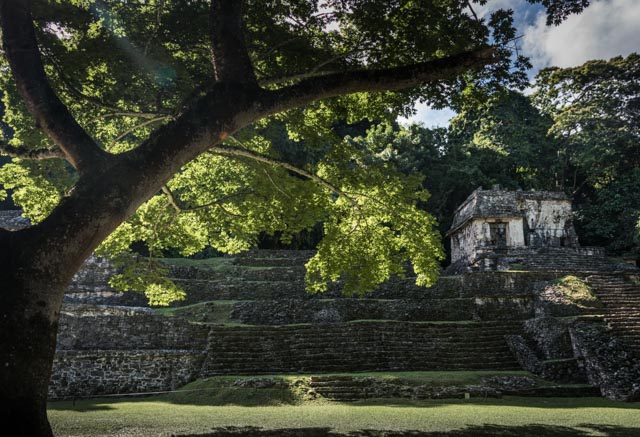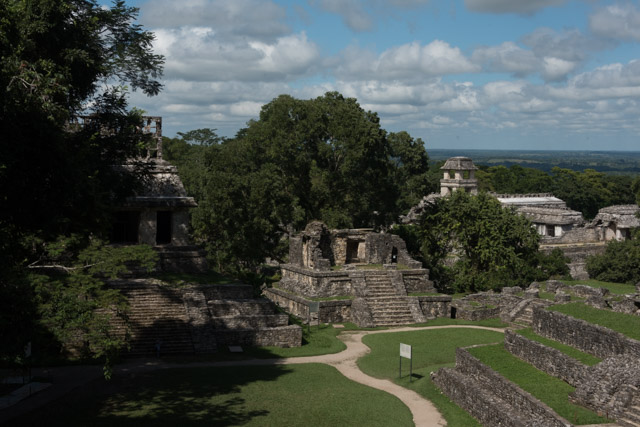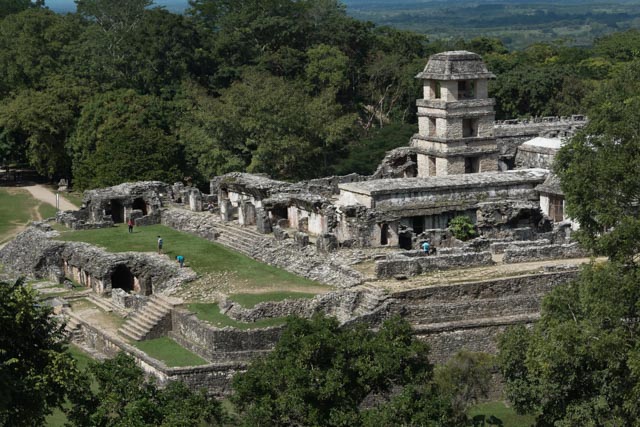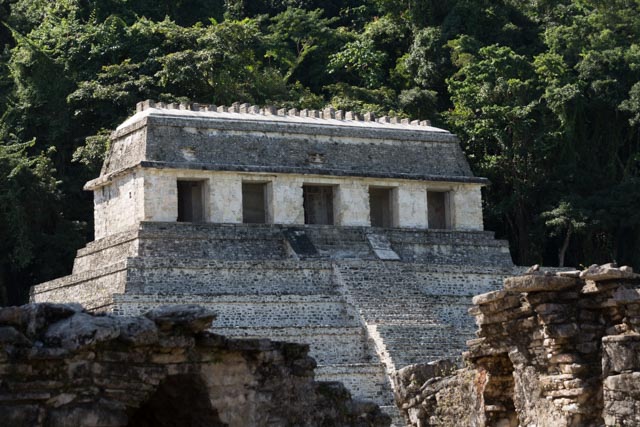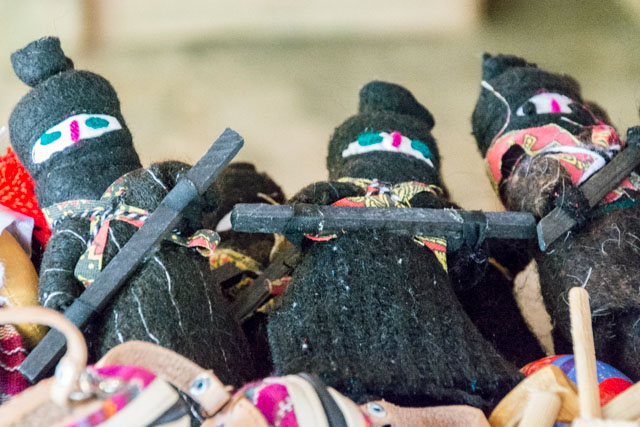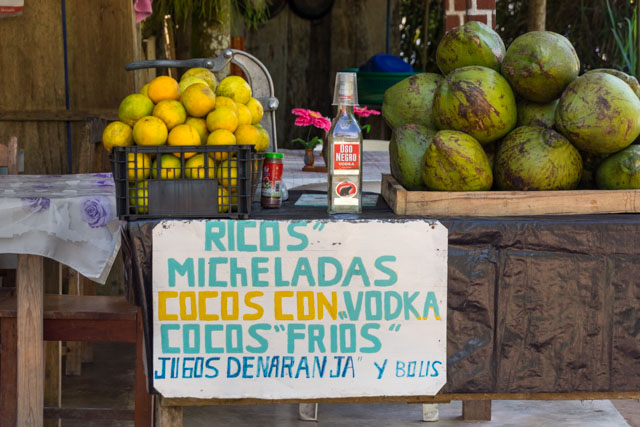








Chiapas is a troubled region.
Leaving Oaxaca behind, we boarded our overnight bus to San Cristóbal de las Casas. Just as we were set to go, a police officer boarded the bus and video-ed each passenger. I managed to get some sleep but I was woken up in the middle of the night, presumably when we crossed into Chiapas for a police check. Three officers boarded the bus independently, each conducting a search. And the bus itself was subjected to prodding and banging. A hour before we reached our destination, we stopped in Tuxtla Gutiérrez (the capital of Chiapas) where a number of people got off. Again, at the point of departure, an officer went through the bus and video-ed us all again.
The reason for all this? The area we were heading for is in the hands of Zapatistas. The region is home to one of the largest indigenous populations in the country. It is famous for the 1994 Zapatista uprising, which secured new rights for the indigenous people. The movement has had some successes, namely in agricultural economy and improved infrastructure. The region grows coffee, corn, cacao, tobacco, sugar, fruit, vegetable and honey for export, and tourism plays an important role. The troubles are low key these days, but can still affect travel plans as roads are often subjected to blockade.
It is one of the poorest regions of Mexico, and certainly for the little time we’ve been here, it feels a world apart from the Mexico we have seen so far.
Our bus arrived soon after 7.30am. We both managed to get some sleep overnight but it wasn’t as comfortable a journey I’d hoped for partly due to the fact that our ADO bus wasn’t one of the new ones.
We checked into our hotel, Casa Margarita, a lovely building with a central courtyard and a small roof terrace. And for the first time this trip, we reached for an extra layer.
Located at an elevation of nearly 2,100 metres, San Cristóbal de las Casas is again very colourful with a number of pedestrianised cobblestone streets. The buildings are even lower than the ones we’ve seen in Puebla and Oaxaca.
At 8am, we came across a queue of over 100 people, waiting for the bank to open to get paid. At the same time, various processions made their way across town, the devotees singing barefoot and bearing t-shirts of their Virgin. Political slogans adorn the walls.
We had a good breakfast and excellent organic coffee at Tonantzin, a great corner café just opposite the hotel, which had been recommended to us.
At 12 noon, we left San Cristóbal de las Casas for San Juan Chamula. Now, it doesn’t matter how much I describe what happened there or what we saw… I doubt I’d be able to convey how unreal it all was and felt.
The community of San Juan Chamula is indigenous and deeply religious. You cannot take photos inside the ‘church’, and you cannot take close ups of people. There are reports of cameras being confiscated, and people being thrown out of the community or put in jail. They have their own judicial system and goverment, and their own tribal sense of justice.
The valleys around San Cristobal are populated with Tzotzil and Tzeltal villages. The people of San Juan Chamula are Tzotzil. The women wear black skirts made of sheep skin, and the men wear matching jackets. These outfits are very expensive and to wear it shows your status in the community.
They do things their own way in San Juan Chamula. When the power and the church separated in 1859, they ‘claimed’ the church and now use it for their own celebrations and prayers. The inside of the church is dark and thick with incense, the smell of which mixes with the aroma of pine needles covering the floor. There were thousands of lit candles. The ones on wooden tables were in glasses, others were placed directly on the floor (which you would think would be a recipe for disaster with so much pine needles everywhere). There no pews, no altars. People sit on the floor, facing the Saint they have come to pray to in order to heal themselves or people they care about. They have offerings: four different soft drinks, each representing a different type of corn growing locally and pox (a liqueur made of corn, sugar cane and wheat used for ceremonies), which roughly translates as medicine. People took sips of pox (pronounced posh), passing it around. Burping is encouraged, as it means the evil spirits leave your body. Further into the chuch, a woman is holding on to a chicken which later on will be sacrificed. Some of the saints are holding mirrors because when you pray to the saint, your soul leaves your body and the mirror will help your soul find its way back by reflecting it back onto the body and in some ways, this is why you cannot take photos inside the church, as your camera’s mirror will steal souls. Where you would expect to see Jesus Christ, you see instead Saint John the Baptist who is held higher than Jesus as he baptised Jesus; he is also linked to a sheep which is why the sheepskins are worn.
As we were ready to leave, a procession entered the church. Incense, candles and musicians fill all the space. People deep in prayers with their faces lit by candlelight. The bells ringing outside. The music inside. The smell of incense and pine needles. The noise of people cleaning the candle wax off the floor, ready for the next devotees.
This isn’t Christianity. It’s deeply rooted indigenous beliefs. It’s nothing like we’ve ever experienced. It is a unique place. Oh, and they practice polygamy.
Leaving San Juan Chamula behind us, we travelled to Zinacantán (‘lands of bats’), and yes, the church there reveres bats. The bat is a symbol of the underworld where the pre-hispanic cultures believe the dead reside. The church is traditional at first sight but there are animal figures dotted around and the details in the architecture are picked out in black, a throwback to the bat. The area is famous for growing flowers and women weave flowers on their skirts. We made a stop at a local indigenous family’s house where we ate tortillas with cheese, omelette and olives. The tortillas were made fresh for us, and were delicious.
Back in San Cristobal, we got caught up in various processions to the Lady of Guadalupe. The small chapel dedicated to Our Lady of Guadalupe is packed with pilgrims. Yound children are dressed up as indigenous people (toddlers have mustaches drawn on them!) and there is a party atmosphere. Half way up the hill, we stopped to play table football (I won – Holland 4 Mexico 1) and from the top, the views of the town are unparalleled, or would be without all the Christmas decorations. Firecrackers becoming a background to our days.
We reflected on our day with local beers in Café Bar Revolución.
A day like no other; some of the most incredible sites we’ve ever seen.








